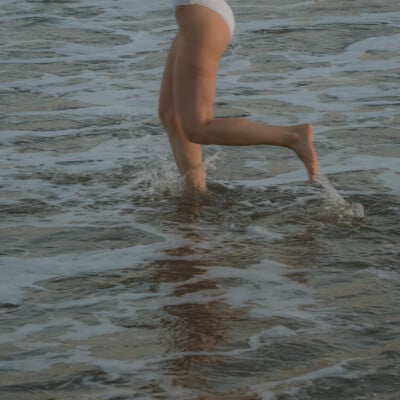Editor’s note: Today’s post is brought to us by Minaa B., author of Rivers Are Coming, founder of the digital mental health magazine Respect Your Struggle, and a licensed master social worker. Minaa is also a full-time freelance writer based in NYC, and on her spare time enjoys a good book and loves candle lighting for relaxation.
Burnout — the breakdown that occurs when we have too heavy a load on our backs, and an outcome I’m personally all too familiar with. For many years, I felt it was my job to carry my stress, but still act as if I had it all together. I told myself that’s what “adulting” looked like.
I had to learn the hard way that if I don’t tend to myself and acknowledge my feelings, then the heaviness on my shoulders will cause me to live a neglected and unsatisfied life. In other words: burnout. For me, burnout manifests in an intense episode of depression, but by practicing mental realness (a term I made up for myself), I’ve been able to avoid burnout and journey towards healing.
Mental realness is making a decision to live authentically by being in tune with your feelings — the good and the bad — and not letting them define you. Instead, engage in positive practices that elevate your lifestyle and provide you with a greater sense of mental health.
The real world requires us to lay ourselves down at the feet of our jobs, school, work, parenting, and other activities without ever truly tending to our emotional needs. So do some deep reflecting. Are you practicing mental realness? If not, here are some ways to start…

Check in with yourself daily.
What’s on your agenda for the day, and are you committing yourself to more than you can actually carry? Stop doing that. Stop over-extending yourself and making yourself available for things that you know will potentially break you down. You deserve to take a breather. Life is going to continue to happen. Know your limits and set boundaries.
*photo by Emma Gutteridge for Style Memos

Check in with your emotions.
Because of my clinical depression, I am wired to experience either elevated periods of joy or extreme bouts of sadness. Luckily this is managed with medication, but even on the pill, I know that I have to be fully in touch with my feelings so that they aren’t exasperated by triggers. Checking in with my emotions has helped me in countless ways, and I’ve found this to be the key to practicing mental realness. I check in with my emotional levels before going after the next big thing, and thus avoid hitting a breaking point. Make note of where you stand on the feelings chart, and tend to those emotions first.
*photo via Belle Dentelle

Be intentional.
If we could learn to be as intentional about our mental state as we are about deadlines and goals, we could be thriving in ways that would be beneficial not only to our selves but also to our overall lives.
Be actively engaged in your mental awareness for a sense of balance and to cultivates happiness and peace. Understand that the best preventive medicine for a successful lifestyle is being in tune with your wellbeing, and creating a wellness plan that offers sustainability and is edifying for your soul.
*photo by Amanda Fordyce via Join the Breed

Know what your body is telling you.
The body has its own way of talking to us about how it’s feeling and the damage that we are causing it. You might feel tension in your neck or back, swelling in your feet, struggling with sleep, tense or tight muscles, rapid heartbeats, shallow breathing and more — all of these things are signs that there is something deeper happening, possibly related to your emotions. These reactions are actually a blessing, because when we are unaware of what our emotions are doing for us, our bodies will let us know, and that is a gateway to seeking management for our symptoms.
*photo by Lindsay Anne

Don’t turn a blind eye to your mental health.
According to NAMI, Approximately 1 in 5 adults in the U.S. — 43.8 million, or 18.5% — experiences mental illness in a given year. It’s important to understand these numbers because the reality is; humans are susceptible to experiencing issues that are beyond our control, and there needs to be no shame around that. In an effort to be mentally real, we must notice the signs and symptoms that have significantly impacted your day to day functions. If they last beyond a two week period, this could possibly be a mental health issue and deserves professional attention.
*photo by Emma Gutteridge for Style Memos

Self-care is the best care.
Are you taking care of yourself? Are you giving yourself the space that you need to recharge? Understand that there is nothing that you can offer anyone if you are operating on empty. Be in tune with your levels as you practice mental realness and know that in order to be your best self, you must first take care of yourself. Self-care is a highly useful tool and a great form of preventative medicine. Even if all you have is 5 minutes to yourself in a day, those 5 minutes can go a long way if you choose to put yourself first during that time.




